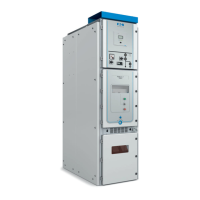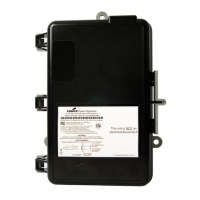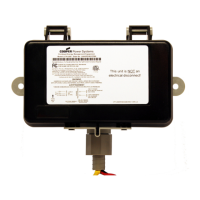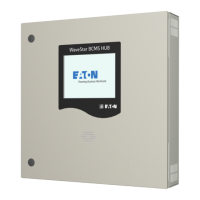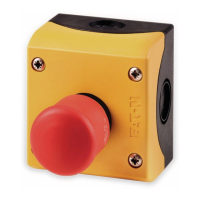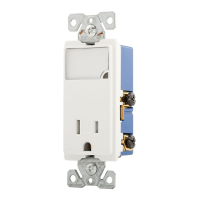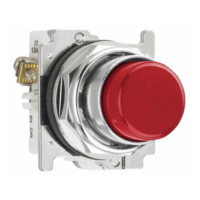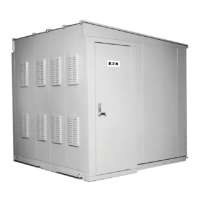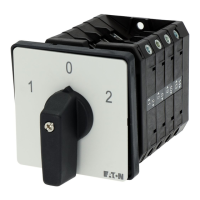12
Instruction Manual IM01500001E
Effective July 2011
Pow-R-Line switchboards
EATON CORPORATION www.eaton.com
Busway
A switchboard may include one or more provisions for connection
to Eaton brand busway. Busway can feed the switchboard, be fed
from the load side of an overcurrent device within the switchboard,
or both.
Switchboards with busway connection(s) contain flange connection
‘tie-bar(s)’ assembled in the appropriate section. The tie-bars will
accept the corresponding busway flange extension. Consult switch-
board and busway drawings for specifics. The tie-bars are a transition
between the switchboard conductors and the busway flange exten-
sion, and are assembled as part of the switchboard section.
Figure 22. Downward Elbow Right Flange
Figure 23. Standard Flange
The switchboard flange has a corresponding piece shipped with the
busway run. The busway installer attaches the two flange pieces
together prior to energization. (See Figure 22 and Figure 23.)
Figure 24. Busway/Busduct
The bus assembly is completely formed and drilled for connections,
including phase bussing and neutral, if needed. Additionally, ground-
ing connections are supplied.
Busway typically enters a switchboard section through the top.
However, busway may attach from the bottom, back, or side of the
switchboard in special configurations. (See Figure 24.)
Temporary bracing may be provided to support the busway assembly
in the switchboard during shipment. All temporary bracing must be
removed after connections are completed.
The switchboard structure should NOT be used to support any
busway run or flange and extension.
Bolts and hex nuts with captive Belleville washers are supplied by
the manufacturer with the switchboard to connect the switchboard
installed flange and the busway flange. Follow instructions shipped
with the switchboard and with busway flange.
When a busway connection is supplied on an outdoor switchboard,
sealing the busway connection is critical. Upon completing the
necessary bus connection, the installer is responsible for sealing the
connection point where the busway flange connects to the chimney
top cover or side/rear cover. A tube of RTV 732 silicone sealant and
a roll of gasketing material are provided with the switchboard for
this purpose.
For installation instructions on busway runs, please refer to
NEMA publication BU 1.1-2000, General Instructions for Handling,
Installation, Operation and Maintenance of Busway Rated 600V
or Less.
C
L
C
L
C
L
X
Y
11.62
(295.2)
minimum
5.00
(127.0)
3.00
(76.2)
92.00
(2336.8)
Tie-Bar
Busduct
C
L
L
C
90.50
(2298.7)
Rear of Enclosure
Recommended
Hardware for Bolting
to Flange Extensions
0.375 Hardware
Hex Head Bolt
Flat Washer
& Keps Nut.
Tighten Bolt with
20 lb ft Torque
Busduct
Flange
Switchboard
Ground Bus
Connection
View of Three-Phase
Four-Wire Busduct Centered
in Switchboard
Phase Bus
Extension
Side View of Busduct Aligned
From Rear of Switchboard

